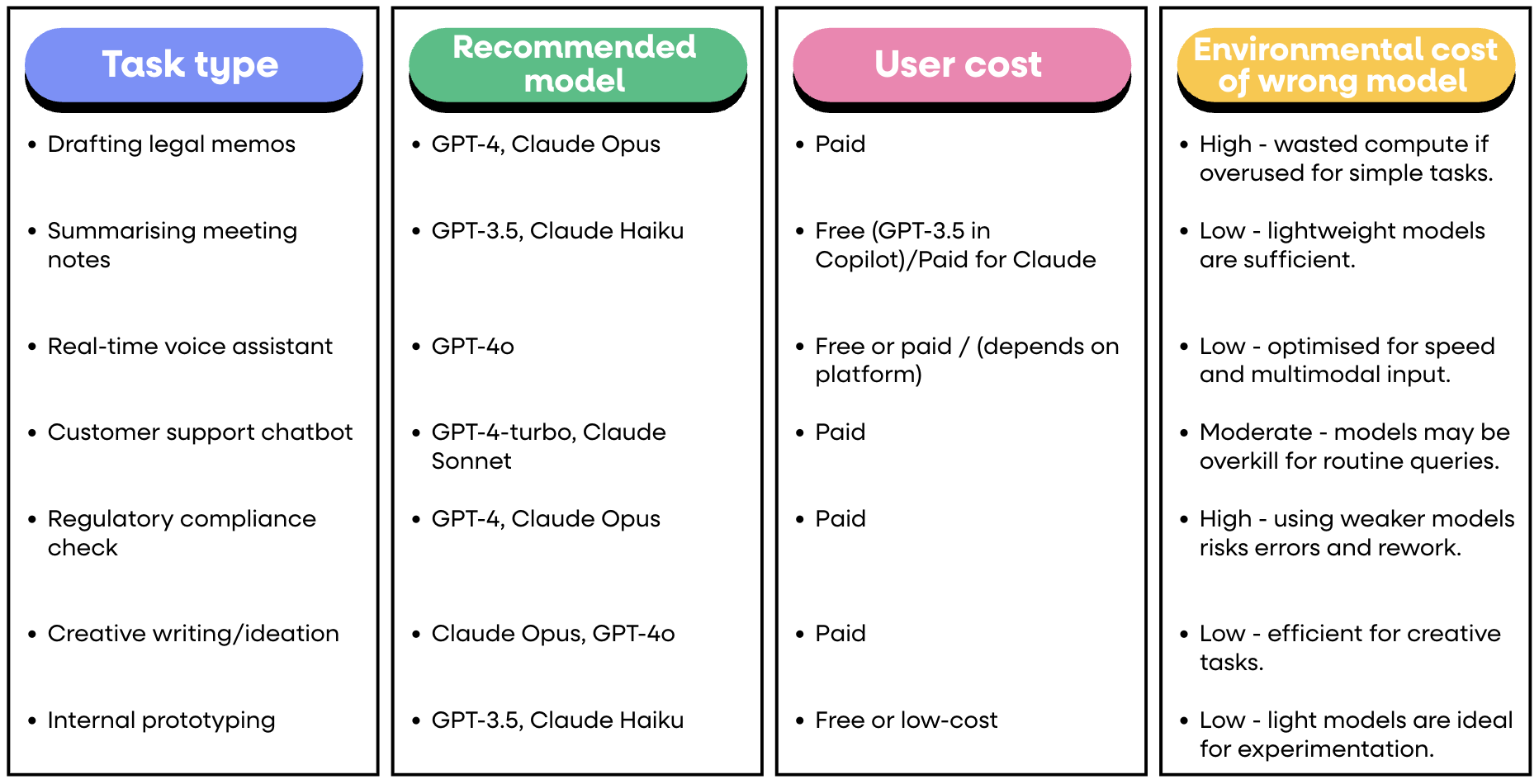
Choosing the Right AI Model: Matching the Model to the Mission
As generative AI becomes embedded in everything from legal workflows to customer service, the question is no longer "Should we use AI?" but "Which model should we use - and when?"
With multiple versions of GPT, Claude, Gemini, and other frontier models available, choosing the right one is a strategic decision. It affects accuracy, cost, latency, environmental impact, and user trust. This post explores how to choose the right model for both the response (the immediate task) and the world (the broader context in which the model operates).
Know Your Options: GPT, Claude, Gemini & More
OpenAI models
- GPT-3.5: Fast and inexpensive. Great for basic drafting and summarisation.
- GPT-4: High reasoning ability and factual reliability. Ideal for legal, financial, and compliance-heavy tasks.
- GPT-4-turbo: GPT-4, but faster and cheaper. Used in Copilot and production environments.
- GPT-4o (omni): Multimodal - text, image, audio - and highly performant. Great for real-time applications and voice interfaces.
Anthropic Claude models
- Opus: Most capable, comparable to GPT-4.
- Sonnet: Balanced performance and cost.
- Haiku: Lightweight, fast, and efficient.
Other notables
- Google Gemini: Strong multimodal capabilities and integration with Google Workspace.
- Meta LlaMa and Mistral: Open-weight models, often used in research or custom deployments.
Model Selection: Task, Cost, and Environmental Impact

Where Copilot Fits In
Microsoft Copilot, powered by GPT-4-turbo and GPT-4o, is designed to help users make smart model choices without needing to understand the technical details. Here is how it helps:
In short: Copilot helps you get the right output from the right model, without needing to choose manually.
Why Environmental Cost Matters
Using high-resource models like GPT-4 or Claude Opus for simple tasks - for example, spelling correction or basic summarisation - consumes more energy and compute than necessary. At scale, this contributes to:
Best practice: Match model complexity to task complexity. Use lightweight models for routine tasks and reserve premium models for high-stakes or nuanced work.
Final Thoughts
Choosing the right model is not just about specs - it is about aligning capabilities with the task's demands and the world's expectations. Whether you are a legal counsel reviewing contracts or a product lead designing AI features, the right model can mean the difference between helpful and harmful, efficient and expensive, compliant and risky.
Smart AI starts with smart choices - and Copilot helps make those choices easier.


the plume press


THE NEWSLETTER FOR IN-THE-KNOW IN-HOUSE LAWYERS
Get the lowdown on legal news, regulatory changes and top tips – all in our newsletter made especially for in-house lawyers.



